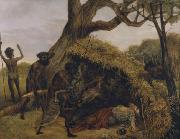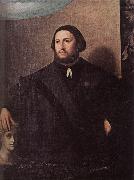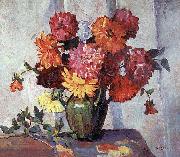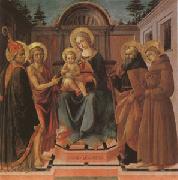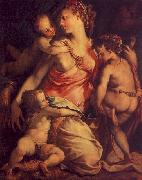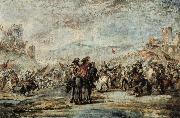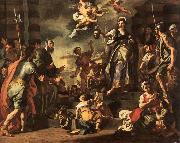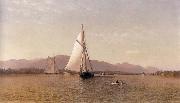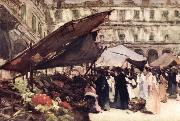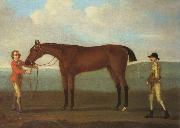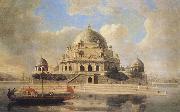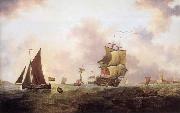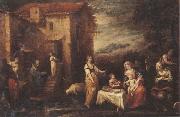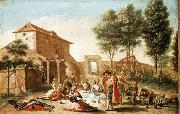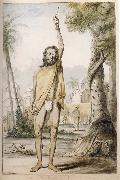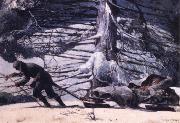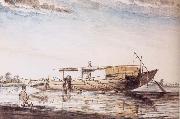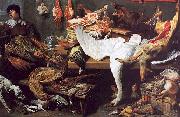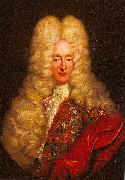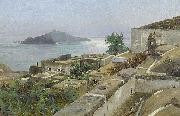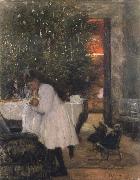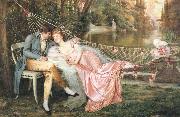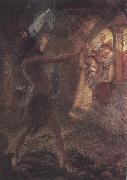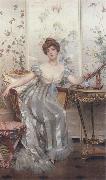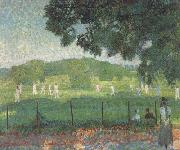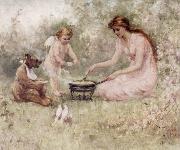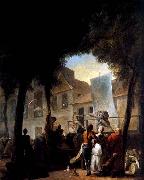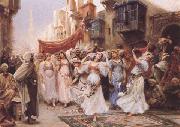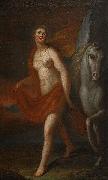|
|
|
|
|
|
|
|
|
|
|
|
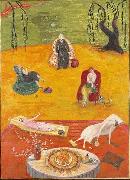 |
Florine Stettheimer
|
|
(August 29, 1871 - May 11, 1944) was an American artist. She has been described as "a Deco-influenced early Modernist whos never really gotten her due".
Florine was born in Rochester, New York to Joseph Stettheimer and Rosetta Walter. Her father, a banker, left the family before the children were grown. She was the fourth of five children: Walter, Stella, Carrie, Florine, and Ettie. After Walter and Stella married, the youngest three immured with their mother to form an epicurean way of life.She spent much of her early life traveling, studying art in Italy, Spain, France, Germany, and Switzerland. She studied for three years in the mid-1890s at the Art Students League of New York, but came into her own artistically upon her permanent return to New York after the start of World War I. In October 1916, the only one-person exhibition of her work during her lifetime took place at New York's Knoedler & Company. She exhibited 12 "high-keyed, decorative paintings", none of which were sold.
Cushioned by family resources, Stettheimer refrained from self-promotion and considered her painting "an entirely private pursuit". She intended to have her works destroyed after her death, a wish defied by her sister Ettie, her executor.
Stettheimer's privileged position pervades her work. As one critic has written, "money she regarded as a birthright, decidedly not something to be flaunted in the shape of a dozen yachts, but rather to be used as a palliative against the more unpleasant aspects of the world outside... In this frame of mind, she felt free to depict life as a series of boating parties, picnics, summertime naps, parades and strolls down Fifth Avenue."
She created the sets and costumes for the 1934 production of Four Saints in Three Acts, an opera by Virgil Thomson with a libretto by Gertrude Stein. Her designs, which used cellophane in innovative ways, proved to be the project for which she was best known during her lifetime.
She assisted her sister Carrie in the creation of the Stettheimer Dollhouse, now in the collection of the Museum of the City of New York. The house is a whimsical depiction of an upper-class residence, filled with works by Stettheimer's artist friends, including William Zorach, Alexander Archipenko, and Gaston Lachaise. |
|
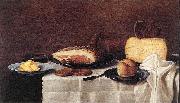 |
Floris van Schooten
|
|
(1590-1655), was a Dutch Golden Age still life painter.
According to the RKD, Van Schooten was the son of a leading Catholic family of Amsterdam who came to live in Haarlem in 1612. During that period, many Catholic families left Amsterdam where the Protestants had the upper hand in local government, for Haarlem, where the climate for Catholicism was more tolerant. The young Van Schooten became a member of the Haarlem Guild of St. Luke and married the daughter of a leading beer brewer there, Rycklant Bol van Zanen. Together they had 3 daughters and a son Johannes, who also became a painter |
|
|
|
|
|
|
|
|
|
|
|
|
|
|
|
|
|
|
|
|
|
|
|
|
|
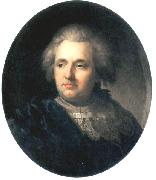 |
Franciszek Smuglewicz
|
|
(October 6, 1745 - September 18, 1807) was a Polish-Lithuanian draughtsman and painter. Smuglevičius is considered as a progenitor of Lithuanian art in the modern era.Some scholars consider him as a spiritual father of Jan Matejko's school of painting.[citation needed]. His brother was Antoni Smuglewicz.
Smuglewicz was born in Warsaw into a Polish-Lithuanian familyHis father, Łukasz Smuglewicz, also a painter, had moved to Warsaw from the province of Samogitia. In 1763 Franciszek journeyed to Rome, where he began the study of fine arts under the tutorship of Anton von Maron. He stayed in Rome for the next 21 years, where he embraced the Neo-Classical style.
In 1765 he received a royal scholarship from king Stanisław August Poniatowski and was admitted into the Saint Lucas Academy. As a colleague of Vincenzo Brenna he participated in cataloging artifacts from Nero`s Domus Aurea. In 1784 he returned to Warsaw, where he founded his own school of fine arts, one of the predecessors of the modern Academy of Fine Arts. |
|
|
|
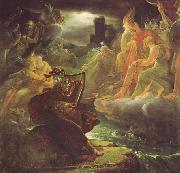 |
Francois Pascal Simon Gerard
|
|
12 March 1770 - 11 January 1837) was a French painter born in Rome, where his father occupied a post in the house of the French ambassador. His mother was Italian. As a baron of the Empire he is sometimes referred to as Baron Gerard. |
|
 |
francois sablel
|
|
Jean ISABEL and Marie Charlotte BACON. She was married to Jean Baptiste BLANCHETTE on Feb 27 1775 in St. Pierre, Quebec |
|
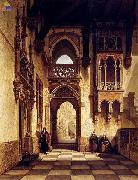 |
Francois Stroobant
|
|
Francois Stroobant (14 June 1819 Brussels - 1 June 1916 Elsene) was a Belgian painter and lithographer, and brother of the lithographer Louis-Constantin Stroobant (1814-1872) noted for his part in Flore des Serres et des Jardins de l'Europe.
He attended the Brussels Academie des Beaux-Arts between 1832 and 1847, studying under Francois-Joseph Navez, Paul Lauters and Francois-Antoine Bossuet (1798 - 1889). In 1835 he worked in the studio of the lithographer Dewasme-Pletinckx in Brussels.
Stroobant's subjects were mainly landscapes and architecture. He travelled extensively through the Netherlands, France, Germany, Switzerland, Italy, Spain and Hungary, exhibiting in the galleries of the Belgian towns Ghent, Antwerp and Brussels. His romantic painting style stayed constant throughout his career. He was founder and first director in 1865 of the Academie des Beaux-Arts at Sint-Jans-Molenbeek in Brussels.
|
|
|
|
|
|
|
|
|
|
|
|
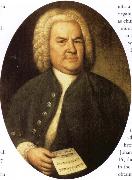 |
franz schubert
|
|
Period: Romantic (1820-1869)
Country: Austria
Born: January 31, 1797 in Vienna, Austria
Died: November 19, 1828 in Vienna, Austria
Genres: Chamber Music, Choral Music, Concerto, Keyboard Music, Miscellaneous Music, Opera, Orchestral Music, Symphony, Vocal Music |
|
|
|
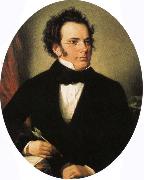 |
franz von schober
|
|
was a student in Vienna, where he met F. Schubert, E. Bauernfeld, and M. von Schwind. He is the author of twelve poems set to music by Schubert between 1815 and 1827, of which the best known is An die Musik (Du holde Kunst). In later life Schober was a secretary of legation (Legationsrat) in Weimar. |
|
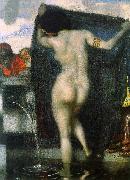 |
Franz von Stuck
|
|
German Symbolist/Expressionist Painter and Sculptor, 1863-1928 |
|
|
|
|
|
|
|
|
|
|
|
|
|
|
|
|
|
|
|
|
|
|
|
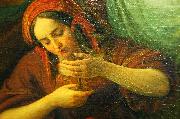 |
Friedrich Wilhelm Schadow
|
|
Friedrich Wilhelm Schadow (7 September 1789 - 19 March 1862) was a German Romantic painter.
He was born in Berlin and was the second son of the sculptor Johann Gottfried Schadow.
In 1806-1807 Friedrich served as a soldier. In 1810 he traveled with his elder brother Rudolph to Rome where he became one of the leaders among painters of the Nazarene movement. Following the example of Johann Friedrich Overbeck and others, he joined the Roman Catholic Church, and held that an artist must believe and live out the truths he essays to paint. The sequel showed that Schadow was qualified to shine more as a teacher and mentor than as a painter. As an author, he is best known for his lecture, Ueber den Einfluss des Christentums auf die bildende Kunst (About The Influence of Christianity On The Visual Arts) (Desseldorf, 1843), and the biographical sketches, Der moderne Vasari (Berlin, 1854).
In Rome, Schadow was given one of his first major commissions when the Prussian Consul-General, General Jakob Salomon Bartholdy, befriended the young painter, and asked him and three young compatriots (Cornelius, Overbeck and Veit) to decorate in fresco a room in his house on the Pincian Hill. The overall theme selected was the story of Joseph and his brethren, and two scenes, the Bloody Coat and Joseph in Prison, were conferred on Schadow. In 1819, Schadow was appointed professor in the prestigious Berlin Academy of the Arts, and his ability and thorough training gained many devoted disciples.
It was during this period that Schadow developed his paintings for churches. In 1826, Professor Schadow was made director of the Desseldorf Academy of the Arts, which he reoriented towards the production of Christian art, though he began a major dispute with one of its professors, Heinrich Christoph Kolbe, ending in the latter leaving the Academy in 1832. In 1837, Schadow selected, at request, those of his students best qualified to decorate the chapel of St Apollinaris on the Rhine with frescoes. When finished, they were acclaimed as the fullest and purest manifestation of the spiritual side of the Desseldorf school. One of his famous students, Heinrich Mucke, carried on the liturgical art with emphasis both in painting and frescoes. The painting of the "Wise and Foolish Virgins," considered one of his masterworks, was commissioned in 1842. Now in the Städel Museum, this large and important picture, while carefully considered and rendered, it however lacks power of some of his other works. |
|
|
|
|
|
|
|
|
|
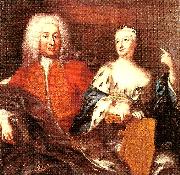 |
georg engelhardt schroder
|
|
Georg Engelhard Schröder, född den 31 maj 1684 i Stockholm, gift 1727 med Anna Brigitta Spöring, död den 17 maj 1750; konstnär, porträtt- och historiemålare.
Georg Engelhard Schröders far, Veit Engelhard, hade omkring år 1670 kommit från N??rnberg och bosatt sig i Stockholm där Georg Engelhard föddes 1684. Han blev tidigt elev hos konstnären och målaren David von Krafft (1655-1724) men lämnade honom 1703 för utlandsstudier.
Under 21 år for Georg Engelhard runt i Europa. Han vistades först en tid i Nordtyskland, innan färden gick vidare till Italien. I Venezia förblev han under fem år och kopierade gamla mästare, sysslade med vedutamåleri och hade kontakt med pastellmålarinnan Rosalba Carriera (1675-1757). I Roma tog han intryck av barockmålarna Carlo Dolci (1616-1686), Carlo Maratta (1625-1713), Francesko Trevisani (1656-1746) m.fl. och tillägnade sig det raska men ytliga framställningssätt, som tillhörde den tidens italienska konst. I Paris samlade han impulser hos den franske målaren Noel Nicolas Coypel (1690-1734). Reminiscenser av den italienska och franska konsten kan man påträffa flerstädes i hans kompositioner. I London stannade han i sju år och tog starka intryck av Godfrey Knellers (1646-1723) och Dahls porträttkonst.
När Daniel von Krafft avled 1724 kallades Georg Engelhard Schröder hem till Sverige och efterträdde i december sin gamle läromästare som kunglig hovkonterfejare. Som sådan uppbar han lön. Konung Fredrik I satte stort värde på sin konterfejare, och lät honom måla otaliga porträtt av sig och sin drottning Ulrika Eleonora. År 1745 utnämndes han till hovintendent. Georg Engelhard anlitades mycket och samlade ihop en betydande förmögenhet. På 1740-talet nåddes Sverige av den nya franska smaken, i främsta rummet via konstnären Gustaf Lundberg (1695-1786), varvid Georg Engelhard kom att skjutas åt sidan. Han representerade i Sveriges 1700-talsmåleri sista skedet i det italienska inflytandet.
Långt ifrån den förnämste, var dock Georg Engelhard en av sin tids mest uppburne målare. Han arbetade inom ett vitt fält: utförde kyrktavlor, allegorier, historiska motiv och porträtt. Hans arbeten har ej sällan någonting vacklande och obestämt, vilket i förening med mycken ojämnhet i utförandet gör många av dem mindre tilltalande för konstkännaren. Han har dock efterlämnat verk, som vittnar om, att han, när han allvarligt uppbjöd sin förmåga, var mäktig till både varm och djup uppfattning samt hade stor skicklighet i färgbehandling och i framställningens enskildheter. |
|
|







